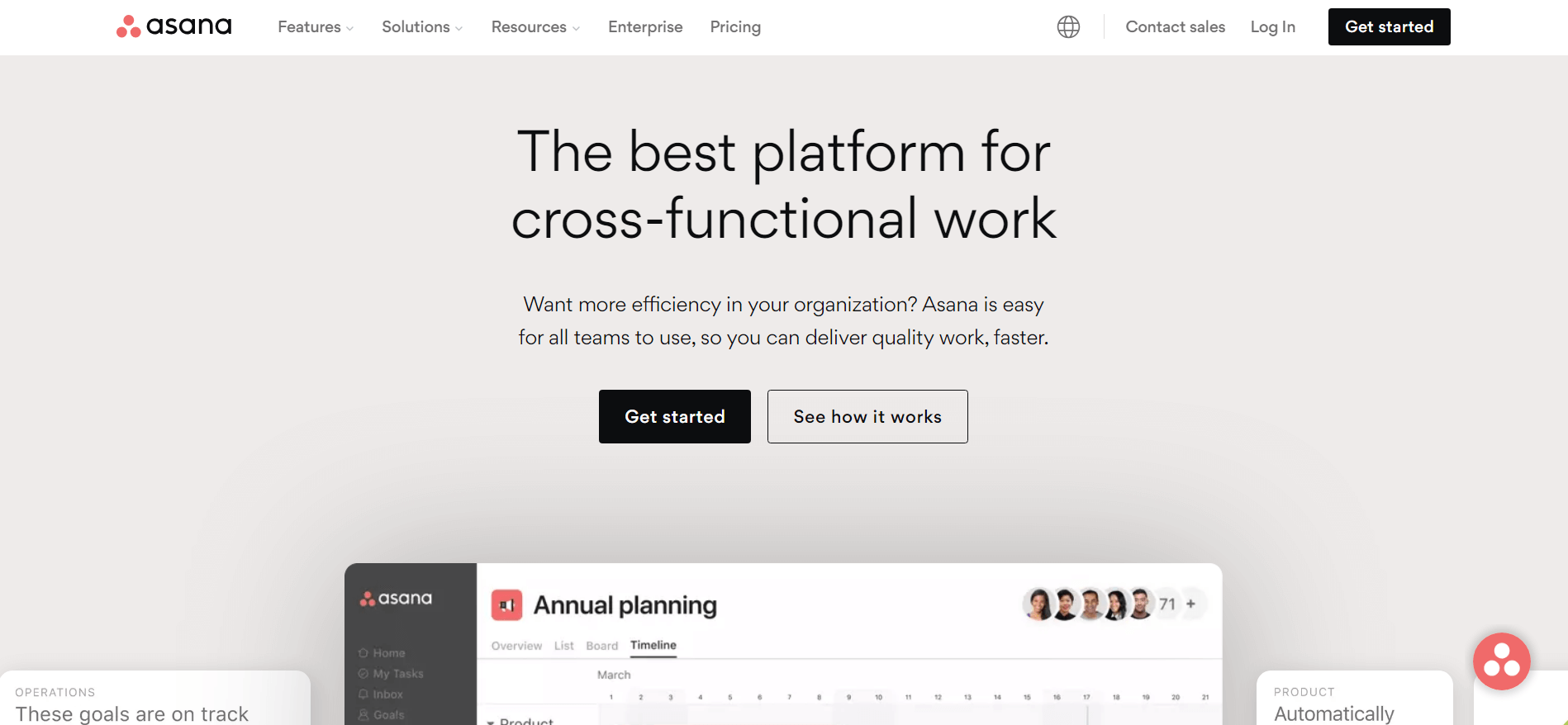Home » Asana
B2B SaaS Reviews reviewers select and review products independently.
We may earn commissions if you buy through affiliate links, which help support our testing.
Last updated: January 7, 2025
Imagine a digital platform where teams can easily organize, track, and manage their work.
Asana offers a user-friendly interface where individuals and groups can create projects, assign tasks, set deadlines, and communicate progress. This tool is designed to enhance collaboration and increase transparency in workflow management, making it simpler for teams to stay aligned on their objectives and milestones.
Whether it’s for small projects or large-scale operations, Asana provides a centralized space for task management and team coordination.

Asana.com is best suited for various teams and departments within organizations seeking efficient work and project management.
It’s ideal for marketing, operations, IT, product management, and strategic planning. The platform supports cross-functional work, providing tools for campaign management, creative production, request tracking, and remote team collaboration. It’s designed to improve workflow efficiency, enhance team collaboration, and streamline processes across different business areas.
Asana is widely used by large enterprises, including several Fortune 100 companies, indicating its suitability for complex organizational needs and diverse team structures.
The main use cases of Asana are:
Some of Asana’s most notable features are:
Top 5 Pros of Asana:
Top 5 Cons of Asana:
Asana’s pricing and packages are structured as follows:
Please note that software pricing is subject to change. It’s recommended to visit their site for pricing and contact them for more information.
Here are several customer success stories for Asana:
Spotify:
Vox Media:
LVMH Givenchy Fragrance:
Read the best Asana reviews by verified users here:
Note: review counts as of January 14th, 2024.

I'm the Founder and Editor-In-Chief of B2B SaaS Reviews and the Director of Demand Generation at PartnerStack, the leading platform for partner management and affiliate marketing in B2B SaaS. My experience spans several notable B2B SaaS companies, including Influitive (Advocate Marketing), LevelJump (Sales Enablement, acquired by Salesforce), and Eloqua (Marketing Automation, acquired by Oracle). I hold a Bachelor of Commerce in Marketing Management from Toronto Metropolitan University and a Master of International Business from Queen's University, with academic exchanges at Copenhagen Business School and Bocconi University.